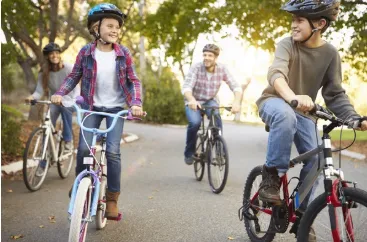
Is the Bike Helmet Worn by You or Your Child REALLY Safe?
As more families turn to biking for exercise and recreation, bicycle helmets have become a familiar sight on Alabama roads and sidewalks. But here’s the question most people never ask: Is that helmet truly protecting you or your child?
At Nelson, Bryan, and Cross, we’ve seen the aftermath of serious bicycle accidents—some involving helmets that looked fine on the outside, but failed to protect when it mattered most. Here's how to ensure the helmet on your head is more than just a piece of plastic.
Why Helmet Safety Matters
According to the CDC, wearing a helmet reduces the risk of serious head injury by nearly 70%. But not all helmets are created equal—and a poorly fitted or uncertified helmet may give a false sense of security.
When an accident happens, the condition and quality of the helmet can become critical factors in:
Preventing traumatic brain injury (TBI)
Supporting a personal injury claim
Defending against insurance company tactics
How to Check If Your Helmet Is Actually Safe
1. Look for Certification
In the U.S., all bike helmets should meet safety standards set by the Consumer Product Safety Commission (CPSC). Look inside the helmet for a sticker that says:
“Complies with U.S. CPSC Safety Standard for Bicycle Helmets”
Or similar wording indicating compliance
If there's no sticker—don’t use it.
2. Check the Fit
A helmet should sit level on the head and:
Cover the forehead without tilting back
Not move side to side or front to back
Have snug straps forming a “V” shape under the ears
Be buckled firmly beneath the chin
Kids grow quickly, so helmet fit should be re-checked every few months.
3. Inspect for Damage
Even a single crash—even one that didn’t seem bad—can compromise a helmet’s structure. Look for:
Cracks in the outer shell
Compressed foam
Loose padding or straps
If it’s been in a crash or shows signs of wear, replace it immediately.
Helmet Laws in Alabama
Alabama state law requires anyone under age 16 to wear a helmet when operating or riding on a bicycle. Some cities and counties have even stricter local ordinances, and failure to wear a helmet may affect personal injury compensation in certain cases.
While adults aren’t legally required to wear helmets, doing so greatly reduces the risk of severe injury—and could strengthen your legal position in the event of a crash caused by another party.
What If You or Your Child Is Injured in a Bike Crash?
Even with proper helmets, accidents involving cars, unsafe sidewalks, or defective bike parts can lead to serious injuries. If someone else’s negligence caused the crash, you may be entitled to compensation for:
Medical bills
Pain and suffering
Lost wages
Long-term disability or care
Emotional trauma
Insurance companies may try to shift blame, especially if a helmet wasn’t worn or didn’t meet safety standards. That’s why it’s important to speak with an experienced injury attorney.
We Can Help You Ride with Confidence
At Nelson, Bryan, and Cross, we care about your safety before and after a crash. If you or your child were injured in a bicycle accident, we’ll help investigate what happened, review your legal options, and fight for the recovery you deserve.
Contact us today for a free consultation. We’re here to protect Alabama families—on and off the road.